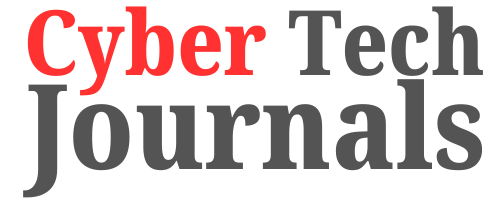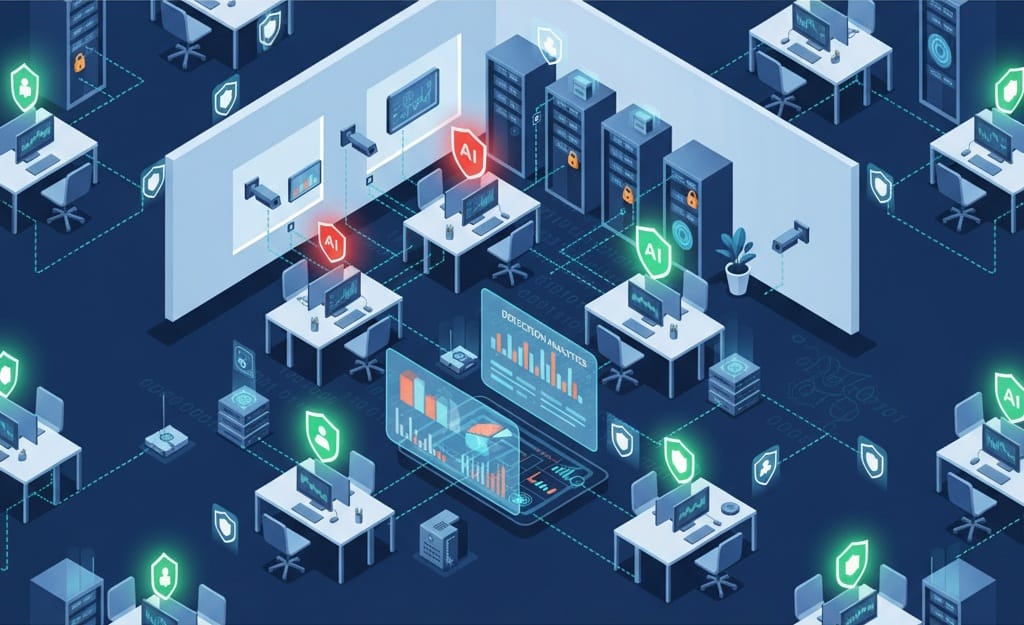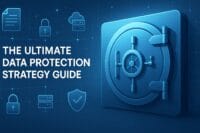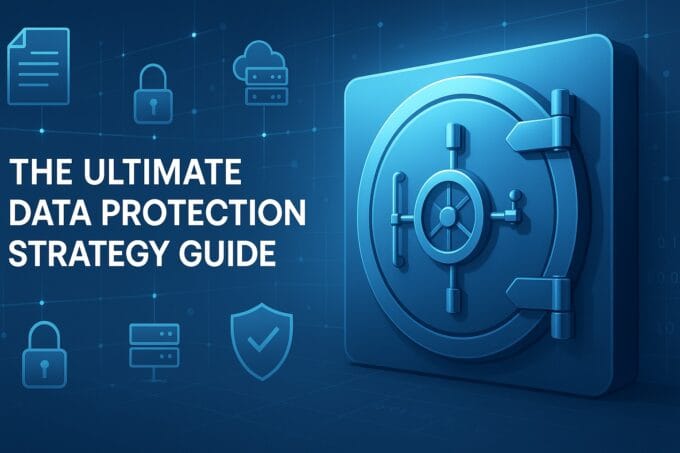Picture this scenario: Your data loss prevention system alerts you to a massive data breach. After investigation, you discover an employee uploaded sensitive customer information to ChatGPT while drafting a marketing proposal. The worst part? This wasn’t malicious—they genuinely thought they were being productive.
Welcome to the world of shadow AI detection, where artificial intelligence tools operate in your organization’s blind spots, creating risks you didn’t even know existed.
If you’re an IT security professional, CIO, or compliance manager, you’re likely already aware that employees are using AI tools without approval. What you might not realize is just how widespread this practice has become—and more importantly, how to detect it systematically.
This comprehensive guide will equip you with practical, hands-on shadow AI detection methods you can implement immediately, regardless of your budget or technical resources. You’ll learn specific audit processes, technical detection mechanisms, and cost-effective monitoring solutions that actually work in real-world environments.
Table of Contents
Understanding Shadow AI Detection: Beyond the Basics
Shadow AI detection isn’t just about finding unauthorized tools—it’s about understanding how AI usage patterns create security vulnerabilities in your organization. Unlike traditional shadow IT, which typically involves infrastructure or software applications, shadow AI introduces unique challenges around data processing, model interactions, and compliance requirements.
The scope of shadow AI extends far beyond employees using ChatGPT. It includes developers integrating AI APIs into applications, marketing teams using AI-powered design tools, and business analysts uploading data to AI-driven analytics platforms. Each interaction creates potential exposure points that traditional security monitoring often misses.
Recent industry research reveals the magnitude of this challenge. Organizations discover an average of 66 generative AI applications in their environment, with 10% classified as high-risk. More concerning is that GenAI-related data loss prevention incidents have increased by 250%, now comprising 14% of all DLP incidents.
The detection challenge is compounded by AI tools’ accessibility and integration capabilities. Many AI services operate through web browsers, making them invisible to traditional network monitoring. Others embed AI features within existing approved applications, creating a gray area where usage isn’t technically unauthorized but still lacks proper oversight.
Understanding these patterns is crucial for effective shadow AI detection. The tools aren’t inherently malicious—they’re filling productivity gaps that formal IT processes haven’t addressed. This means your detection strategy needs to balance security requirements with business needs, identifying risks without stifling innovation.
Immediate Shadow AI Detection Methods You Can Implement Today
Let’s start with detection methods you can deploy immediately using tools likely already in your environment. These approaches don’t require budget approval or extensive technical deployment—just systematic implementation of existing capabilities.
Browser-Based Detection Techniques
Your first line of defense starts with browser monitoring. Most shadow AI interactions occur through web browsers, making browser logs and extension audits your most accessible detection method.
Begin by auditing browser extensions across all managed devices. Popular AI extensions like Grammarly, Notion AI, or ChatGPT browser plugins often fly under the radar during standard security reviews. Use your endpoint management system to generate extension inventories, then cross-reference against your approved software list.
Browser history analysis provides another immediate detection avenue. Look for recurring visits to AI platforms like OpenAI, Claude, Perplexity, or Hugging Face. While this doesn’t capture all usage, it identifies patterns worth investigating. Focus on users accessing multiple AI platforms or spending significant time on AI-related sites during work hours.
Network traffic inspection offers deeper insights into AI usage patterns. Configure your web filtering system to log rather than block AI-related domains initially. This creates visibility without disrupting productivity while you assess usage patterns. Pay particular attention to data upload patterns—large file uploads to AI platforms often indicate document processing or code analysis activities.
Endpoint Log Analysis
Your endpoint detection and response (EDR) system contains valuable shadow AI indicators if you know where to look. Focus on application execution logs that show AI-related software launches, file access patterns suggesting AI tool usage, and network connections to AI service endpoints.
Create custom rules to flag specific behaviors: clipboard operations involving large text blocks (suggesting copy-paste to AI tools), screen capture activities on AI platforms, or file downloads from AI services. These behaviors don’t necessarily indicate policy violations but create audit trails for investigation.
Monitor for AI-related process execution on endpoints. This includes not just obvious applications but also command-line interfaces, API tools, and development environments that might connect to AI services. Python environments running AI libraries or API clients connecting to AI platforms deserve particular attention.
SaaS Discovery and Cloud Access Security Brokers
If you have a SaaS discovery tool or cloud access security broker (CASB), configure it to identify AI-related cloud services. Most major AI platforms register as SaaS applications, making them detectable through standard cloud discovery processes.
Focus your CASB policies on data classification rather than blanket blocking. Configure alerts for sensitive data uploads to any AI platform, regardless of whether the platform is approved. This approach catches risky behavior while maintaining visibility into legitimate use cases.
Email and Communication Monitoring
Email security systems often miss AI-related risks because the interactions occur outside email workflows. However, you can detect AI usage patterns through communication analysis. Look for email threads discussing AI tools, shared AI-generated content, or references to AI platforms in meeting notes.
Microsoft 365 and Google Workspace environments provide activity logs showing when users access AI features within their platforms. Microsoft Copilot, Google Bard integration, and similar embedded AI capabilities generate audit trails through standard productivity suite logging.
Comprehensive Shadow AI Audit Framework
Now let’s build a systematic audit framework that goes beyond immediate detection to create comprehensive visibility into your organization’s AI usage patterns.
Phase 1: Baseline Assessment
Your audit begins with establishing current shadow AI usage across the organization. This isn’t about enforcement—it’s about understanding scope and impact before implementing controls.
Start with a anonymous survey across all departments asking about AI tool usage. Frame this as a productivity assessment rather than a security investigation. Ask specific questions about which AI tools employees use, what types of data they process, and how these tools integrate into their workflows.
Simultaneously, conduct technical discovery using the immediate detection methods outlined above. Combine browser logs, network traffic analysis, and application usage data to create a comprehensive picture of actual AI usage patterns. The gap between self-reported usage and technical discovery often reveals the scope of shadow AI in your environment.
Document your findings by department and use case. Marketing teams typically show high usage of content generation tools, while development teams gravitate toward coding assistants. Finance and HR departments often use AI for document analysis and processing. Understanding these patterns helps prioritize your security response.
Phase 2: Risk Classification
Not all shadow AI usage carries equal risk. Develop a classification framework that helps prioritize your response efforts and resource allocation.
Create risk categories based on data sensitivity, compliance requirements, and business impact. High-risk scenarios include processing regulated data (PII, PHI, financial information), accessing proprietary code or intellectual property, and using AI tools for decision-making without human oversight.
Medium-risk usage might involve internal documents without regulatory requirements, draft content before review, or AI tools used for research and analysis. Low-risk scenarios typically include personal productivity enhancements, public information processing, and creative projects without sensitive data.
Apply your classification framework to each discovered AI usage instance. This creates a prioritized remediation roadmap and helps justify resource allocation for ongoing monitoring and control systems.
Phase 3: Technical Infrastructure Assessment
Evaluate your current security infrastructure’s ability to detect and monitor AI usage effectively. This assessment identifies gaps in visibility and helps plan necessary improvements.
Review your network monitoring capabilities for AI traffic detection. Many organizations discover their web filtering systems lack comprehensive AI platform databases or miss newly launched AI services. Update your filtering categories and create custom rules for AI-related domains.
Assess your data loss prevention (DLP) system’s effectiveness with AI platforms. Traditional DLP rules often miss AI interactions because they occur through encrypted HTTPS connections and don’t trigger standard file transfer monitoring. Configure DLP policies specifically for AI platform interactions and data upload patterns.
Evaluate your identity and access management systems for AI service integration. Many AI platforms support single sign-on integration, which can provide better visibility and control compared to personal account usage. Consider whether SSO integration improves your monitoring capabilities while meeting business needs.
Phase 4: Policy and Process Development
Based on your baseline assessment and risk classification, develop specific policies governing AI tool usage. These policies should be practical, enforceable, and aligned with business needs rather than blanket restrictions.
Create use case-specific guidelines rather than universal rules. Different departments have different AI needs and risk tolerances. Your policy framework should accommodate this reality while maintaining consistent security standards.
Define approval processes for new AI tools and use cases. This process should be streamlined enough to avoid driving usage underground while thorough enough to assess security and compliance implications. Consider creating pre-approved categories for common, low-risk scenarios.
Establish monitoring and reporting requirements for approved AI usage. Even sanctioned AI tools require oversight to ensure ongoing compliance with your policies and regulatory requirements.
Technical Detection Mechanisms: Deep Dive into Logs, APIs, and Network Traffic
Let’s explore the technical foundations of shadow AI detection, focusing on specific implementation details for network traffic analysis, API monitoring, and log correlation techniques.
Network Traffic Analysis for AI Detection
Modern AI platforms use sophisticated content delivery networks and encrypted communications that can challenge traditional network monitoring approaches. However, specific traffic patterns and metadata still provide valuable detection capabilities.
Implement DNS monitoring to track AI platform access patterns. Most AI services use recognizable domain patterns that DNS logs can capture even when HTTPS traffic is encrypted. Create monitoring rules for domains like openai.com, anthropic.com, cohere.ai, huggingface.co, and similar platforms.
Focus on connection metadata rather than content inspection. Monitor connection duration, data transfer volumes, and session patterns that indicate AI usage. Large uploads followed by smaller downloads often suggest document processing or analysis activities. Frequent short connections might indicate API usage or automated interactions.
Configure your firewall logs to capture detailed connection information for AI-related domains. This includes source IP addresses, connection times, data volumes, and session duration. Correlate this information with user identity data to build comprehensive usage profiles.
API Traffic Monitoring
API-based AI usage presents unique detection challenges because it often originates from applications rather than direct user interaction. Developers integrate AI capabilities into business applications, making the AI usage invisible to traditional user monitoring approaches.
Monitor API key usage patterns if your organization has approved AI service accounts. Most AI platforms provide detailed usage analytics that show which applications, users, or processes consume API resources. Unusual usage spikes or patterns might indicate unauthorized usage or compromised credentials.
Implement SSL certificate inspection where technically feasible and legally compliant. This allows deeper inspection of API communications to AI platforms. Look for API authentication patterns, request frequencies, and data payload sizes that indicate the scope of AI integration.
Configure your web application firewall (WAF) to log AI-related API calls. If your applications integrate AI services, WAF logs show the frequency, sources, and patterns of these integrations. This visibility helps distinguish between approved application usage and potential shadow implementations.
Log Correlation and Analysis Techniques
Effective shadow AI detection requires correlating information across multiple log sources to build comprehensive usage pictures. Single-source monitoring often misses the full scope of AI interactions in modern environments.
Establish correlation rules between endpoint activity, network traffic, and application logs. For example, correlate browser activity on AI platforms with file access logs to understand what data users might be processing. This correlation provides context that individual log sources can’t deliver.
Implement user behavior analytics (UBA) specifically tuned for AI usage patterns. Traditional UBA systems might not recognize AI-related activities as significant. Create custom rules that flag unusual AI platform access patterns, abnormal data transfer volumes to AI services, or access from unusual locations or devices.
Use security information and event management (SIEM) systems to create AI-focused dashboards and alerting. Configure rules that trigger on combinations of AI-related activities: endpoint file access followed by AI platform connections, unusual data upload volumes, or access patterns inconsistent with user roles.
Automated Detection and Alerting Systems
Build automated systems that provide continuous monitoring without requiring constant manual oversight. This automation ensures consistent detection capabilities while reducing the resource burden on your security team.
Create detection rules that balance sensitivity with false positive rates. Initial implementations should err toward higher sensitivity to establish baseline behaviors, then tune down as you understand normal usage patterns. Document your tuning decisions to maintain consistency across rule updates.
Implement staged alerting that escalates based on risk levels and usage patterns. Low-risk AI usage might generate informational logs, while high-risk scenarios trigger immediate alerts to security teams. This staged approach prevents alert fatigue while ensuring appropriate response to significant risks.
Configure automated response capabilities for high-risk scenarios. This might include temporarily blocking access to AI platforms, requiring additional authentication, or triggering incident response procedures for sensitive data exposure scenarios.
Cost-Effective Monitoring Solutions for Every Budget
Effective shadow AI detection doesn’t require enterprise-level security budgets. Here are practical solutions organized by resource availability and organizational size.
Free and Open-Source Detection Tools
Several free tools provide valuable shadow AI detection capabilities that complement your existing security infrastructure. These solutions work particularly well for smaller organizations or those beginning their shadow AI detection journey.
pfSense and OPNsense firewalls include web filtering capabilities that can track and log AI platform access. Configure these systems to log rather than block AI-related domains initially, creating visibility into usage patterns without disrupting productivity.
Security Onion provides comprehensive network monitoring capabilities including full packet capture and analysis tools. While primarily designed for intrusion detection, it effectively captures AI-related network traffic for analysis and investigation.
Elastic Stack (ELK) creates powerful log analysis capabilities for shadow AI detection. Collect logs from multiple sources—firewalls, endpoints, applications—and use Elasticsearch queries to identify AI usage patterns. Kibana dashboards provide visualization capabilities that help identify trends and anomalies.
Suricata intrusion detection system can detect AI platform communications through custom rules. Create rules that identify connections to AI services, monitor for specific API interaction patterns, and alert on unusual data transfer volumes to AI platforms.
Cloud-Native Detection Solutions
Cloud environments offer native tools that provide shadow AI visibility without additional software deployment. These solutions integrate with existing cloud security postures and often provide more comprehensive coverage than on-premises alternatives.
AWS CloudTrail and VPC Flow Logs capture network activity and API calls that include AI service interactions. Configure CloudWatch alarms for unusual AI service usage patterns, unexpected data transfers to AI platforms, or API calls from unauthorized sources.
Microsoft Azure’s network security groups and activity logs provide visibility into AI platform communications. Azure Sentinel includes built-in rules for monitoring AI service usage and can correlate activities across multiple Azure services.
Google Cloud’s VPC Flow Logs and Cloud Logging capture AI-related network activity and application interactions. Cloud Security Command Center provides centralized visibility into AI usage patterns across your Google Cloud environment.
Configure cloud access security brokers (CASBs) like Microsoft Defender for Cloud Apps or similar solutions to monitor AI platform usage. These tools provide detailed visibility into cloud service usage including data uploads, user activities, and integration patterns.
Budget-Conscious Implementation Strategies
Maximize your shadow AI detection capabilities regardless of budget constraints by focusing on high-impact, low-cost approaches that leverage existing infrastructure and capabilities.
Prioritize detection methods based on your organization’s specific risk profile rather than implementing comprehensive monitoring across all categories. If your primary concern is data leakage, focus on DLP integration with AI platforms. If compliance is paramount, emphasize audit logging and reporting capabilities.
Implement detection capabilities in phases, starting with the most critical use cases and highest-risk scenarios. This approach provides immediate security improvements while spreading costs across multiple budget cycles.
Leverage existing security tools’ AI detection capabilities rather than purchasing specialized solutions. Many EDR systems, SIEM platforms, and network monitoring tools include AI-related detection rules that simply need activation and configuration.
Consider managed security services that include AI monitoring capabilities. Many MSSPs now offer shadow AI detection as part of their standard service offerings, providing enterprise-level capabilities at predictable monthly costs.
ROI Optimization for Shadow AI Detection
Demonstrate the business value of your shadow AI detection investments by focusing on measurable outcomes and risk reduction rather than just technical capabilities.
Quantify the potential costs of shadow AI incidents: data breach response, regulatory fines, intellectual property theft, and business disruption. Compare these potential costs to your detection system investments to build compelling business cases for ongoing funding.
Measure detection system effectiveness through specific metrics: time to discovery of unauthorized AI usage, reduction in high-risk AI incidents, and improvement in compliance audit results. These metrics demonstrate ongoing value and justify continued investment.
Document cost savings from early detection of shadow AI risks. Include avoided incidents, reduced investigation time, and improved compliance postures in your ROI calculations. This documentation supports budget requests for expanded detection capabilities.
Building Your Shadow AI Detection Infrastructure
Creating sustainable shadow AI detection requires systematic infrastructure development that scales with your organization’s needs and evolving AI landscape.
Architecture Planning and Design Principles
Design your detection infrastructure around scalability, maintainability, and integration with existing security operations. Your architecture should accommodate growing AI usage while maintaining performance and usability.
Establish centralized logging and analysis capabilities that aggregate AI-related data from multiple sources. This centralization provides comprehensive visibility while simplifying analysis and reporting workflows. Consider using existing SIEM or log management platforms as your foundation.
Design for automation from the beginning rather than building manual processes that become unsustainable as AI usage grows. Automated detection, analysis, and reporting capabilities reduce operational overhead while improving consistency and response times.
Plan for integration with existing security workflows and incident response procedures. Shadow AI detection should complement rather than complicate your current security operations. Design workflows that integrate naturally with existing tools and procedures.
Implementation Phases and Milestones
Structure your implementation to provide immediate value while building toward comprehensive coverage. This phased approach manages complexity while demonstrating ongoing progress and value.
Phase 1 focuses on basic visibility and inventory capabilities. Implement network monitoring for AI platform access, endpoint detection for AI application usage, and basic reporting on discovered usage patterns. This phase typically requires 30-60 days and provides immediate insights into your organization’s shadow AI landscape.
Phase 2 adds risk assessment and classification capabilities. Implement data classification integration with AI usage monitoring, develop risk scoring based on usage patterns and data sensitivity, and create automated alerting for high-risk scenarios. This phase builds on Phase 1 insights and typically requires an additional 60-90 days.
Phase 3 implements advanced analysis and response capabilities. Add user behavior analytics for AI usage patterns, integrate with identity and access management systems, and develop automated response capabilities for policy violations. This phase creates comprehensive detection and response capabilities.
Phase 4 focuses on optimization and expansion. Fine-tune detection rules based on operational experience, expand coverage to additional AI platforms and use cases, and develop advanced analytics for trend analysis and predictive capabilities.
Integration with Existing Security Tools
Maximize your investment by integrating shadow AI detection with existing security infrastructure rather than creating isolated monitoring systems.
Configure your SIEM system to ingest and analyze AI-related logs from multiple sources. Create correlation rules that identify patterns across network traffic, endpoint activity, and application usage. This integration provides comprehensive analysis capabilities without requiring additional analysis platforms.
Extend your DLP system to include AI platform monitoring and data classification. Configure rules that identify sensitive data uploads to AI services and create automated responses for policy violations. This extension protects against data leakage while maintaining visibility into AI usage patterns.
Integrate shadow AI detection with your incident response procedures and security orchestration platforms. Create automated workflows that escalate high-risk AI usage scenarios and trigger appropriate response procedures. This integration ensures consistent response while reducing manual oversight requirements.
Configure your identity and access management systems to provide additional context for AI usage analysis. Correlate AI platform access with user roles, permissions, and business justifications to identify unusual or unauthorized usage patterns.
Scalability and Maintenance Considerations
Design your detection infrastructure to accommodate growing AI usage and evolving AI landscape without requiring constant re-architecture or significant additional resources.
Plan for data volume growth as AI adoption increases across your organization. AI usage monitoring generates significant log volumes that require appropriate storage, processing, and analysis capabilities. Design your infrastructure with scalability buffers to accommodate usage growth.
Establish update procedures for new AI platforms and services. The AI landscape evolves rapidly with new services launching regularly. Your detection system needs systematic update processes to maintain comprehensive coverage as the threat landscape expands.
Create maintenance procedures that don’t require specialized AI expertise. Your ongoing operations team should be able to maintain and tune the system using existing security skills rather than requiring dedicated AI security specialists.
Document your implementation thoroughly to support ongoing operations and future enhancements. Include configuration details, tuning decisions, and operational procedures that enable knowledge transfer and system continuity.
Measuring and Improving Your Detection Capabilities
Establishing metrics and continuous improvement processes ensures your shadow AI detection system remains effective as both threats and technology evolve.
Key Performance Indicators for Shadow AI Detection
Define specific, measurable outcomes that demonstrate your detection system’s effectiveness and guide improvement efforts. These metrics should align with your organization’s risk tolerance and business objectives.
Detection coverage measures how comprehensively your system identifies AI usage across the organization. Track the percentage of known AI platforms monitored, the scope of user and device coverage, and the completeness of data source integration. Aim for coverage metrics that balance comprehensiveness with resource constraints.
Detection accuracy metrics help optimize your system’s signal-to-noise ratio. Measure false positive rates, time to investigate alerts, and accuracy of risk classification. These metrics guide rule tuning and help maintain operational efficiency.
Response effectiveness measures how quickly and appropriately your organization responds to shadow AI incidents. Track mean time to detection, investigation completion rates, and policy violation resolution times. These metrics demonstrate operational maturity and help identify process improvement opportunities.
Risk reduction metrics quantify your system’s business impact. Measure reductions in high-risk AI incidents, improvements in compliance audit results, and prevented data exposure events. These metrics support ongoing investment and demonstrate security program value.
Continuous Improvement Processes
Establish systematic processes that evolve your detection capabilities based on operational experience and changing threat landscapes.
Implement regular detection rule reviews and tuning cycles. Schedule monthly reviews of alert patterns, false positive rates, and coverage gaps. Use this analysis to refine detection rules, adjust risk classifications, and expand monitoring scope where necessary.
Create feedback loops between detection systems and security operations teams. Regular feedback from analysts who investigate AI-related alerts provides valuable insights for system improvement. Document common investigation patterns and integrate lessons learned into automated detection capabilities.
Establish threat intelligence integration processes that keep your detection current with evolving AI security landscapes. Subscribe to relevant threat intelligence feeds, participate in industry security forums, and monitor AI platform security advisories to identify new detection requirements.
Schedule periodic comprehensive reviews of your detection architecture and capabilities. Annual reviews should assess system performance against original objectives, identify technology refresh requirements, and plan capability expansions based on organizational growth and changing risk profiles.
Benchmarking and Industry Comparison
Compare your shadow AI detection capabilities against industry standards and peer organizations to identify improvement opportunities and validate your approach.
Participate in relevant industry benchmarking studies and security maturity assessments that include AI governance components. These assessments provide external validation of your capabilities and identify areas for improvement.
Engage with industry peers through security forums, conferences, and professional associations to share experiences and learn from other organizations’ approaches to shadow AI detection. This engagement provides insights into emerging best practices and innovative approaches.
Consider formal security assessments or audits that include shadow AI detection capabilities. Third-party assessments provide objective evaluation of your system’s effectiveness and help identify blind spots that internal reviews might miss.
Document lessons learned from security incidents involving shadow AI to improve detection and response capabilities. Post-incident reviews should examine how well your detection system performed and identify specific improvements for future incidents.
Reporting and Communication Strategies
Develop reporting capabilities that communicate your shadow AI detection program’s value to various stakeholders while supporting ongoing program improvement and resource allocation.
Create executive dashboards that highlight key risk metrics, detection system performance, and business impact. Executive reporting should focus on risk reduction, compliance improvements, and return on investment rather than technical details.
Develop operational reports that help security teams manage daily detection activities. These reports should highlight new alerts, investigation status, and system performance metrics that support ongoing operations.
Prepare regular compliance reports that demonstrate adherence to regulatory requirements and internal policies. These reports support audit activities and provide documentation of due diligence efforts.
Create incident summaries that document shadow AI security events, response actions, and lessons learned. These summaries support organizational learning and help justify ongoing investment in detection capabilities.
Frequently Asked Questions About Shadow AI Detection
What’s the difference between shadow AI and approved AI tools?
Shadow AI refers to artificial intelligence tools used without proper IT approval, security review, or organizational oversight. Approved AI tools go through formal evaluation processes, include appropriate security controls, and operate within established governance frameworks. The key distinction lies in oversight and risk management rather than the tools themselves.
How can small organizations with limited budgets implement shadow AI detection?
Small organizations can start with free and open-source tools like pfSense for network monitoring, Elastic Stack for log analysis, and browser extension audits. Focus on high-impact detection methods like DNS monitoring for AI platforms and endpoint analysis for AI application usage. These approaches provide significant visibility without requiring enterprise security budgets.
What are the most common types of shadow AI usage in organizations?
Common shadow AI usage includes employees using ChatGPT or similar platforms for document analysis, developers integrating AI APIs into applications without approval, marketing teams using AI-powered content generation tools, and business analysts uploading data to AI-driven analytics platforms. Each scenario presents different risk profiles and detection requirements.
How do I balance AI innovation with security requirements in my organization?
Effective balance requires clear policies that enable safe AI usage rather than blanket restrictions. Implement risk-based approaches that allow low-risk AI usage while requiring approval for high-risk scenarios. Create streamlined approval processes for legitimate business needs and provide secure alternatives for common AI use cases.
What regulatory compliance issues should I consider with shadow AI detection?
Shadow AI usage can violate data protection regulations like GDPR, HIPAA, and industry-specific compliance requirements. Your detection system should identify when employees upload regulated data to AI platforms and ensure your monitoring activities comply with employee privacy regulations. Document your detection activities to demonstrate due diligence during compliance audits.
How often should I update my shadow AI detection rules and monitoring?
The AI landscape evolves rapidly with new platforms launching regularly. Update your detection rules monthly to include new AI services and adjust based on false positive rates. Conduct comprehensive reviews quarterly to assess system performance and annually to evaluate architecture and capability requirements.
What should I do when I discover unauthorized AI usage in my organization?
Response depends on the risk level and circumstances. For high-risk scenarios involving sensitive data, immediately investigate the scope of exposure and implement containment measures. For lower-risk usage, focus on education and policy clarification. Always document incidents for trend analysis and policy improvement, and consider whether the usage indicates gaps in your approved AI tool portfolio.
Conclusion: Taking Action on Shadow AI Detection
Shadow AI detection isn’t just another cybersecurity checkbox—it’s a critical capability for maintaining organizational security and compliance in an AI-driven world. The detection methods, audit frameworks, and implementation strategies outlined in this guide provide practical pathways for organizations of all sizes to gain visibility into unauthorized AI usage.
Your immediate next steps should focus on quick wins that provide visibility while building toward comprehensive coverage. Start with the browser-based detection techniques and network traffic analysis methods described earlier. These approaches use existing infrastructure and provide immediate insights into your organization’s shadow AI landscape.
Remember that effective shadow AI detection balances security requirements with business needs. Your goal isn’t to eliminate AI usage but to ensure it occurs within appropriate risk management frameworks. The audit framework and policy development processes outlined here help achieve this balance while maintaining organizational productivity and innovation.
As you implement these capabilities, focus on integration with your existing security operations rather than creating isolated monitoring systems. Shadow AI detection works best when it complements your current incident response, compliance, and risk management processes.
The AI landscape will continue evolving, bringing new tools, platforms, and security challenges. The detection infrastructure and improvement processes described in this guide position your organization to adapt to these changes while maintaining effective oversight of AI usage.
For organizations ready to take the next step in AI governance and security, consider conducting a comprehensive AI risk assessment that includes shadow AI detection capabilities. Professional security consultancies specialise in helping organizations develop and implement effective AI governance frameworks that balance security, compliance, and business needs.
Your shadow AI detection journey starts with understanding current usage patterns and implementing basic monitoring capabilities. From there, the systematic approach outlined in this guide helps build comprehensive detection and response capabilities that scale with your organization’s AI adoption.
The question isn’t whether shadow AI exists in your organization—it’s whether you have the visibility and capabilities to manage it effectively. Start implementing these detection methods today, and take control of your organization’s AI security posture before shadow AI takes control of your risk profile.

















Leave a comment